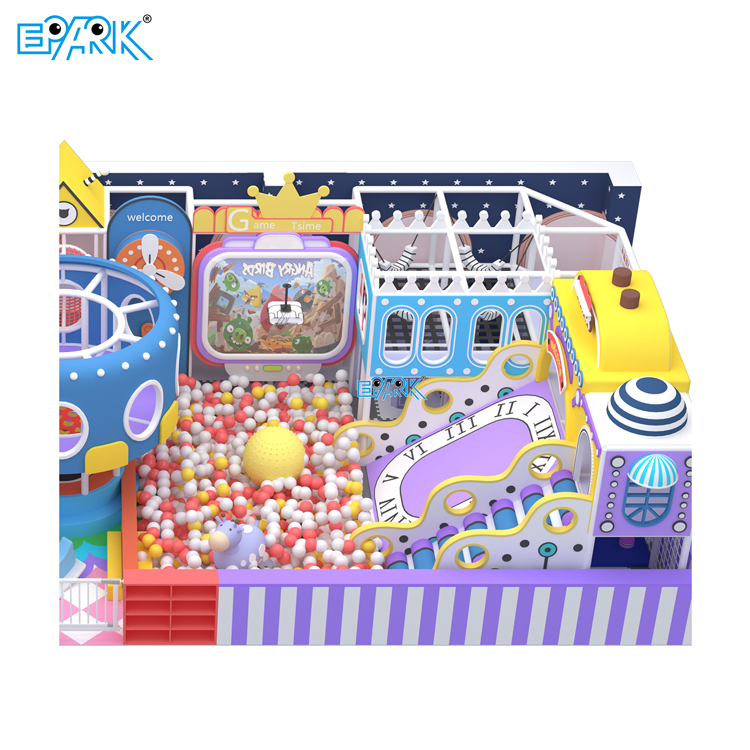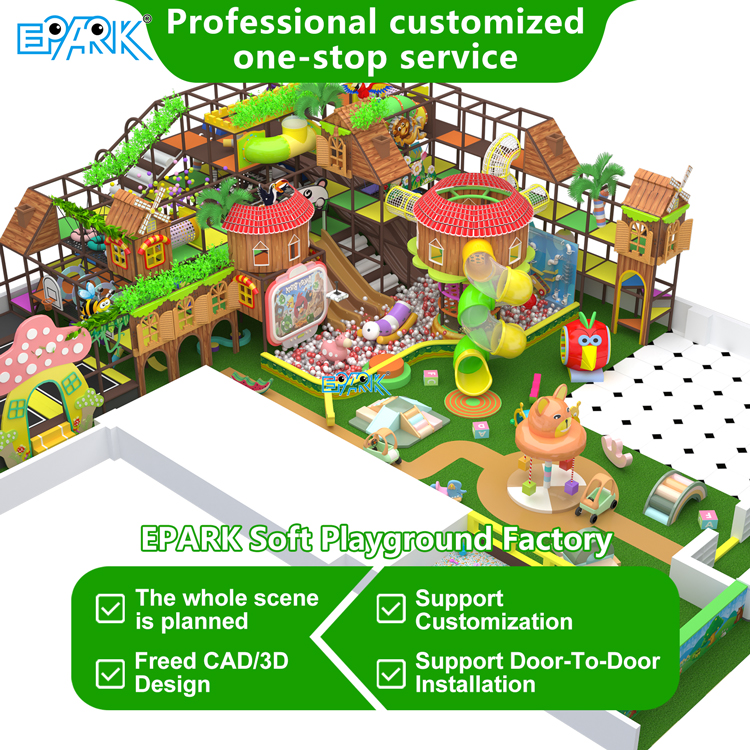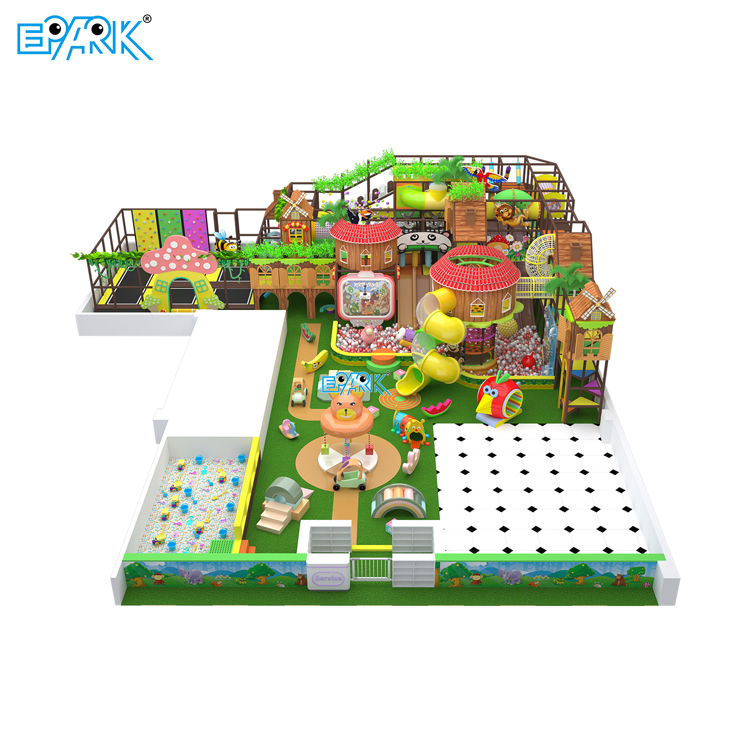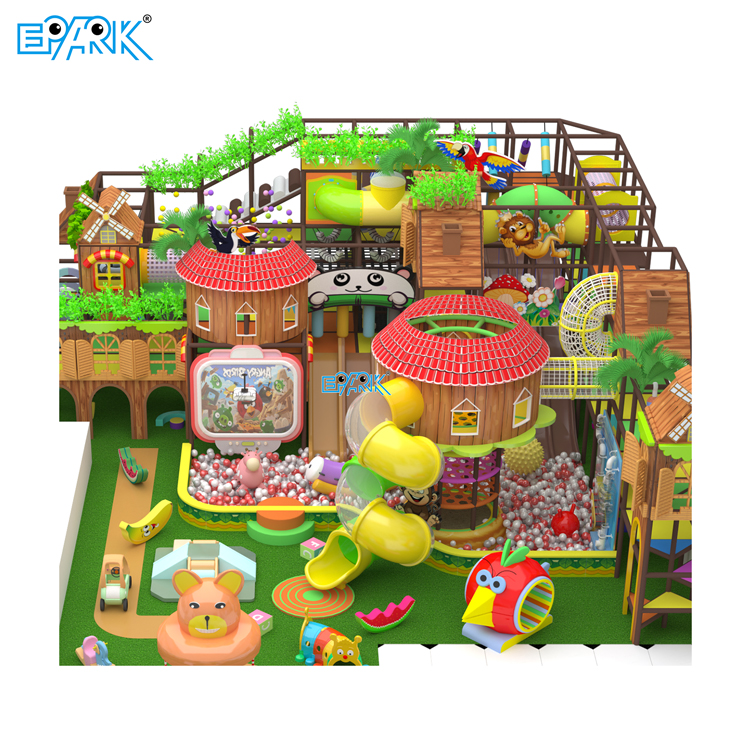Introduction
The kids indoor playground industry has grown rapidly in recent years, fueled by the increasing demand for safe, fun, and educational spaces where children can play regardless of the weather. For entrepreneurs, shopping malls, and family entertainment centers, designing an indoor playground is not just about fun—it is about creating a profitable business model.
This guide will explore how to design a kids indoor playground with a strong focus on business success, customer experience, and long-term sustainability. From location planning and budgeting to revenue strategies and marketing, we will help you design a playground that attracts families, keeps children engaged, and generates high returns.

Step 1: Research the Market and Define Your Concept
Before investing in a kids indoor playground, conduct market research to identify opportunities.
-
Who is your target audience? Families, schools, daycare centers, or tourists?
-
What’s missing in your area? Perhaps there are plenty of outdoor parks but no indoor alternatives.
-
Who are your competitors? Analyze existing indoor playgrounds nearby—what do they offer, and how can you be different?
Your concept will determine the scale and style of your playground:
-
Small neighborhood play areas (100–200 m²) may focus on toddlers and preschoolers.
-
Medium-sized entertainment zones (200–500 m²) may include themed play structures, party rooms, and cafés.
-
Large family entertainment centers (FECs) (500+ m²) can integrate trampolines, VR games, climbing walls, and multi-age play zones.
Step 2: Location Selection—The Foundation of Profitability
Choosing the right location is one of the most critical decisions for your playground’s success.
Ideal Locations for Kids Indoor Playgrounds:
-
Shopping Malls – High traffic, convenient for families.
-
Residential Areas – Near schools and housing complexes.
-
Tourist Areas – Family-friendly attractions.
-
Restaurants and Cafés – Smaller playground corners to retain customers.
Key Factors to Consider:
-
Accessibility (parking, public transport)
-
Safety and neighborhood reputation
-
Size and ceiling height (at least 4–6 meters for multi-level structures)
-
Lease terms and rental cost
Step 3: Business-Oriented Layout and Design
Unlike a home playground, a commercial indoor playground must balance safety, fun, and revenue generation.
Essential Zones to Include:
-
Entrance & Reception – First impression matters. Use digital check-in systems and welcoming designs.
-
Toddler Zone – Dedicated safe area for 1–3-year-olds.
-
Main Play Zone – Slides, tunnels, climbing frames, trampolines.
-
Party Rooms – A huge revenue driver through birthday events.
-
Café/Parent Lounge – Keeps parents spending while kids play.
-
Retail Corner – Sell toys, snacks, and souvenirs.
-
Staff Office & Storage – For smooth daily operations.
Traffic Flow Considerations:
-
Keep visibility high for parents to watch children.
-
Ensure emergency exits are accessible.
-
Position the café and retail area near exits for maximum sales.
Step 4: Selecting the Right Equipment for Profitability
High-quality indoor playground equipment not only ensures safety but also enhances customer satisfaction and repeat visits.
Recommended Equipment Categories:
-
Classic Attractions: Slides, ball pits, climbing frames.
-
Adventure Features: Rope courses, ninja warrior obstacles, trampolines.
-
Interactive Play: Touch panels, digital games, VR or AR features.
-
Role-Play Corners: Mini kitchens, supermarkets, fire stations.
-
Party Facilities: Custom decorations, tables, and chairs for birthday celebrations.
Profit-Boosting Additions:
-
Arcade Machines – Encourage repeat spending.
-
Gift Redemption Games – Increases excitement and loyalty.
-
Photo Booths – Extra income and social media promotion.
Always source from a certified indoor playground manufacturer to guarantee compliance with ASTM, EN1176, and CE safety standards.
Step 5: Budgeting and Financial Planning
The cost of designing a kids indoor playground varies depending on size and complexity.
Estimated Investment Ranges:
-
Small Play Area (100–200 m²): $50,000 – $100,000
-
Medium Playground (200–500 m²): $100,000 – $300,000
-
Large FEC (500+ m²): $300,000 – $1,000,000+
Key Expenses to Plan For:
-
Playground equipment & installation
-
Lease and facility renovation
-
Staff recruitment & training
-
Insurance & safety compliance
-
Marketing campaigns
-
Maintenance and cleaning services
💡 Tip: Plan for at least 12–18 months of operating costs in your financial model to ensure sustainability.
Step 6: Safety Standards and Legal Compliance
Business profitability depends heavily on trust from parents. Safety is the #1 selling point of any indoor playground.
-
Material Safety: Non-toxic, fire-retardant, antibacterial surfaces.
-
Playground Layout: Separate toddler and older kids’ zones.
-
Maintenance Protocols: Daily inspections and monthly deep cleaning.
-
Emergency Preparedness: Fire exits, medical kits, and staff training.
-
Insurance Coverage: Liability insurance to protect against accidents.
By following international standards like ASTM F1918 and EN1176, you ensure both safety and credibility.
Step 7: Staffing and Operations
Your staff play a crucial role in both safety and customer satisfaction.
-
Play Supervisors – Ensure safe play and assist children.
-
Party Hosts – Lead birthday events and keep kids entertained.
-
Maintenance Crew – Handle cleaning and equipment checks.
-
Customer Service Staff – Manage reception, ticketing, and memberships.
Well-trained staff can make your playground not only safer but also more enjoyable for families, leading to repeat visits.
Step 8: Revenue Streams Beyond Entry Fees
A profitable kids indoor playground goes beyond selling tickets. Diversify your income sources to maximize profits.
Popular Revenue Models:
-
Entry Fees – Per hour or unlimited daily passes.
-
Membership Programs – Monthly or yearly passes for loyal families.
-
Birthday Parties & Events – Premium packages with food, decorations, and entertainment.
-
Café & Food Sales – Parents spend while kids play.
-
Merchandise Sales – Toys, souvenirs, and branded items.
-
Arcade Machines – Continuous coin-operated revenue.
-
Sponsorship & Partnerships – Collaborations with local schools or brands.
💡 Smart operators often find that birthday parties account for 30–40% of total revenue in indoor playgrounds.
Step 9: Marketing Strategies for Long-Term Success
No matter how well you design your playground, customers won’t come unless you market effectively.
Online Marketing:
-
SEO Optimization: Rank for keywords like kids indoor playground, indoor playground business, family entertainment center.
-
Social Media Engagement: Share videos, customer reviews, and event highlights on Instagram, TikTok, and Facebook.
-
Google Ads & Local SEO: Target families searching for kids’ activities near you.
Offline Marketing:
-
School Partnerships: Offer group discounts for field trips.
-
Mall Collaborations: Cross-promotions with retailers and food courts.
-
Community Events: Sponsor local festivals and children’s programs.
Step 10: Future-Proofing Your Indoor Playground Business
The entertainment industry evolves quickly. To keep your playground relevant, stay ahead of trends:
-
Digital Integration – Adding AR, VR, and interactive projections.
-
Eco-Friendly Materials – Using sustainable, recyclable equipment.
-
Inclusive Play – Designing spaces for children with special needs.
-
STEM Learning Zones – Combining play with science and education.
-
Flexible Spaces – Modular designs that can be updated easily.
Conclusion
Designing a kids indoor playground is about much more than creating a fun space—it’s about building a sustainable business model. By carefully selecting the right location, designing a business-oriented layout, choosing certified equipment, implementing safety protocols, and developing multiple revenue streams, you can create a playground that is both enjoyable for families and profitable for you as an investor.
A successful indoor playground balances fun, safety, and profitability. Families will keep coming back if their children love the experience, and investors will see strong returns if the business is managed strategically.
Now that you know how to design a kids indoor playground with profitability in mind, the next step is to turn your vision into reality with the right indoor playground manufacturer and business plan.




